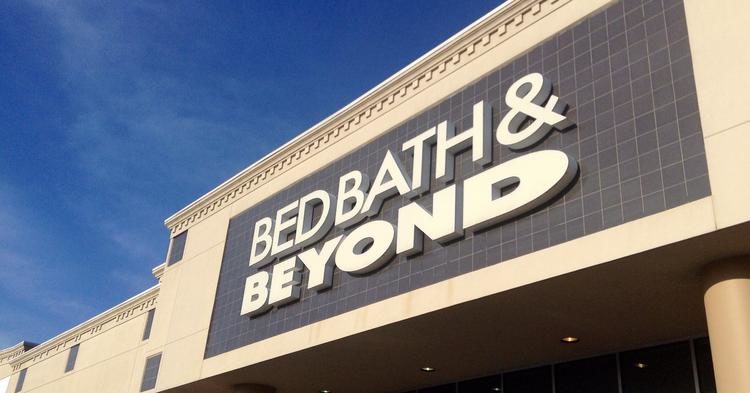Bed, Bath and Beyond is spiraling towards bankruptcy, but in a cruel twist of fate reminiscent of other recent retailers, the executives responsible for wrecking the once venerable home goods store have profited, while the employees who kept stores running through the pandemic are being punished.
Last week, the company told regulators that it has “substantial doubt” that it could stay in business. The New Jersey-based retailer has lost money in 10 of the last 12 quarters and suffered losses of nearly $400 million in the 2022 fall shopping season. On an investor call Tuesday, management all but confirmed the diagnosis. “Multiple paths are being explored,” newly appointed CEO Sue Grove said. “We are determining our next steps thoroughly and in a timely manner.”
The next steps will be incredibly painful for thousands of workers. Grove announced $80-100 million in corporate “cost savings” and an unspecified amount of layoffs. The cuts are on top of the 150 stores Bed, Bath & Beyond is in the process of closing.
The home goods chain seems poised to join a growing list of once-profitable retailers whose dramatic bankruptcies can be attributed directly to executive mismanagement and corporate greed. Meanwhile, workers are left to fend for themselves.
How did we get here?
In 2019, a collection of private equity companies strong-armed their way into Bed, Bath & Beyond. They argued that the previous regime failed to invest in e-commerce and much-needed store renovations.
They were right.
Bed, Bath & Beyond’s competitors were raising the stakes. Amazon dominated online shopping, while Walmart and Target invested billions in catching up. But in the five years before the takeover, for every dollar the company spent renovating stores or updating IT systems, management funneled around $3 to investors through stock repurchases and dividends.
Despite identifying the problem, the new management never made any headway in solving it. In 2021, two years after the takeover, Bed, Bath and Beyond invested 43% less on renovations and technology than the old guard.
The new management, led by CEO Mark Tritton, pivoted the company into a different strategy. Instead of stocking major brands, Bed, Bath & Beyond leaned heavily into designing and manufacturing its own products. In the retail industry, this practice is called private label. Done correctly, private label allows retailers to offer exclusive products that generate higher margins. It’s also hard to do. Companies take decades to build the technical infrastructure and human resources required to manage it. Instead of buying products from suppliers, management had to master design, supply chains, and marketing.
Under Tritton, Bed, Bath & Beyond tried to do it overnight.
The results were a disaster and ultimately sank the company. Consumers thought the new products felt cheap, and store managers were forced to immediately discount goods by 80% to clear the way for new inventory. Then COVID happened. The firm was stuck condensing a decade of work into two years. A hard task on its own but impossible during a pandemic. “Mark Tritton entered the business and ripped up its playbook,” an investment research firm wrote to clients, “But the strategy he replaced it with was not tested and nowhere near sharp enough to compensate for the loss of traditional customers.”
Tritton stepped down as CEO in June 2022.
Executives and shareholders received millions while the firm fell apart
- Company filings show that for fiscal years 2019-2021, the hand-picked executive team was paid over $71 million dollars to revitalize Bed, Bath & Beyond. During that time, the company’s revenue declined by 29%. At the end of 2021, the company generated the same sales as it did in 2009. Only in 2009 the company made $600 million in profit, compared to the $559 million loss it booked in 2021.
- Over half of that amount was paid to former CEO Mark Tritton. In 2021, the median Bed, Bath & Beyond employee earned under $19,000 for the year.
- Under Tritton, the company sold off the company’s valuable real estate assets to help fund $1 billion in stock repurchases. The Board gave Tritton three years to repurchase the stock, he did it a year ahead of schedule.
Workers at Bed, Bath & Beyond are taking the brunt of the punishment
- Based on the company’s most recent SEC filings, it’s estimated that 150 store closures resulted in around 5,000 people losing their jobs. Corporate layoffs impacted approximately 700 people. Many more store closures and job losses are coming.
- Retail store closures disproportionately impact women. Research suggests that women outnumber men at a ratio of 2:1 in brick-and-mortar locations.
Bed, Bath & Beyond’s Story is common
- When Toys-R-Us went bankrupt, 30,000 U.S. workers lost their jobs while private equity investors captured over $470 million in interest and fees.
- Shopko, a Wisconsin-based retailer, once employed 20,000 people across the upper midwest. It went bankrupt after a private equity firm sold its real estate, saddling the company with untenable rent expenses. This was the same tactic Tritton used to help fund $1 billion worth of share repurchases.
- Sears’ CEO made millions of dollars and sucked billions of dollars out of the company while driving the legendary company into bankruptcy. 68,000 Sears employees were left with nothing.
- Corporations regularly reward executives while the firms struggle. In 2020, in the five months before filing for bankruptcy, distressed companies paid nearly $165 million in executive bonuses.
Hope for Bed, Bath & Beyond workers?
- Toys R Us workers’ experience may offer Bed, Bath & Beyond employees a glimmer of hope. After months of battling the toy company’s private equity owners, workers won $20 million in severance pay. However, the victory fell short of fully covering the $75 million Toys R Us workers were owed.
In the case of Bed, Bath and Beyond, the old saying seems true: All profits are thanks to management. All losses are thanks to staff.



